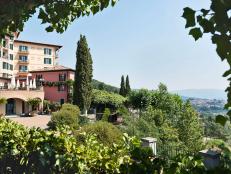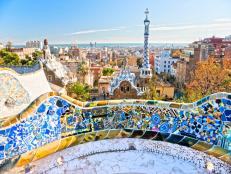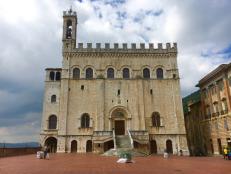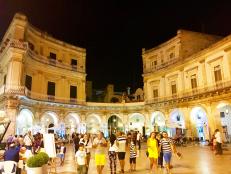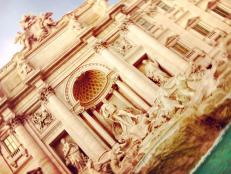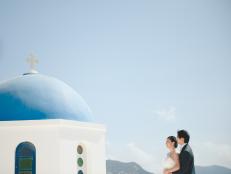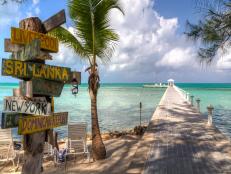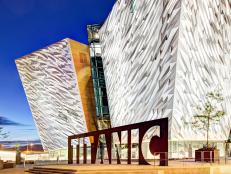Wind Your Way Through Tuscany's Hill Towns
Few places in the world have been as romanticized as Italy's Tuscany region, thanks in large part to the enormous success of Frances Mayes' book Under the Tuscan Sun. But, does the verdant stretch of land dotted with impossibly scenic hilltop towns really live up to the hype?

Valerie Conners
You better believe it. On your next trip to Italy, grab the keys to a Fiat, roll the top down, and take off into the Tuscan sun.
Find Your Dream Villa and Make It a Base
To fully enjoy Tuscany's riches, it's best to base yourself in a single location and set off on day trips across the region. Packing and unpacking bags while repeatedly switching hotels means less time spent traversing the landscape.

Valerie Conners
Settle into one of the region's spectacular villas, like Relais & Chateaux Il Falconiere. Tucked into vineyard hills outside of Cortona, the 17th-century villa and its winery and cooking school are well-placed for living out the Tuscan dream—Cortona is the painfully pretty setting for the movie adaptation of Under the Tuscan Sun.
Il Falconiere makes an ideal base and a respite to return to, thanks to its full-service spa, pool, Turkish bath, and Michelin-starred restaurant. As you prepare to speed off into the Tuscan hills, make a shopping list, and check it twice. Many Tuscan hill towns are famed for producing certain goods, and you'll want to indulge in more than a few of the local wares.
Cortona

Valerie Conners
Start your journey in nearby Cortona. The town that inspired Frances Mayes' now classic book doesn't disappoint. Creep up the sloping Medieval streets, under stone archways and you'll find yourself in the town's Piazza della Republica, where you might be tempted to drop by an enoteca, or wine bar, for a quick refreshment. Once sated, stroll along the narrow streets admiring the many boutique shops selling finely made leather goods and intricate jewelry.
Snap photos of the 13th-century town hall and its impressive clock tower, then make your way to the Duomo, Cortona's cathedral, home to a number of Renaissance-era paintings. History buffs can pay a visit to the Museo dell' Accademia Etrusca, which is housed in a 13th-century palace and holds a collection of Baroque and Renaissance paintings, Roman remains and Etruscan artifacts.
Montalcino
Your ears may pop a time or two as you ascend toward the jaw-dropping heights where Montalcino rises from the hilltop. The town has been settled since Etruscan times, and a climb up into its 13th-century fortress walls offers remarkable views over the olive groves, vineyards, and fields of the Arbia, Ombrone, and Asso valleys. From the fortress, wind your way through the tiny town's streets until you reach the Romanesque Chiesa di Sant'Agostino and adjacent museum, which once housed a convent.
Continue on to the town's Duomo, or cathedral, and then on to the Piazza della Principessa Margherita, where you can gaze upon the 13th-century town hall and remarkable Medieval tower.
Though it was once known for its leather tanneries, today, Montalcino has grown famous for its Brunello di Montalcino wine, made from local sangiovese grapes. Pick up a bottle of this, or of the Rosso di Montalcino, which is made from sangiovese grosso grapes, as tasty souvenirs. Enjoy a dessert wine? Other wines from Montalcino include the sweet Moscadello white.
Pienza

Valerie Conners
Any town known for its cheese is a win in our book, and Pienza—with its earthy sheep's milk pecorinos is no exception. A UNESCO World Heritage Site (though not because of its cheese), Pienza sits high above the Val d'Orcia valley and its picturesque stone buildings, flower-draped balconies, and valley overlooks are showstoppers. The city gained its UNESCO status for being an early and brilliantly preserved example of the Renaissance Humanist concept of urban design.
Certainly, you'll want to admire the trapezoidal piazza and its Palazza Piccolomini, as well as the Duomo church, and Palazzo Comunale town hall. But really, of utmost importance is … the cheese. Drop by one of many local shops for a taste of the varieties of local pecorino, acclaimed for its rich flavors—a byproduct of local sheep grazing on tasty Val d'Orcia grasses. Pick up a hunk to go with your recently purchased bottle of Brunello.
Montepulciano

Valerie Conners
One of Tuscany's most scenic and compelling hill towns is the Medieval walled city of Montepulciano, which many travelers will recognize because of its namesake wine, Nobile di Montepulciano. Stroll along the Corso, the main road which leads up to the Piazza Grande, and admire the boutiques and galleries before stopping by an enoteca, to taste, and perhaps purchase, the local wine. Admire the Renaissance-era palazzos and churches before hopping back in the car and returning to your villa resort for an evening under the Tuscan moon.
